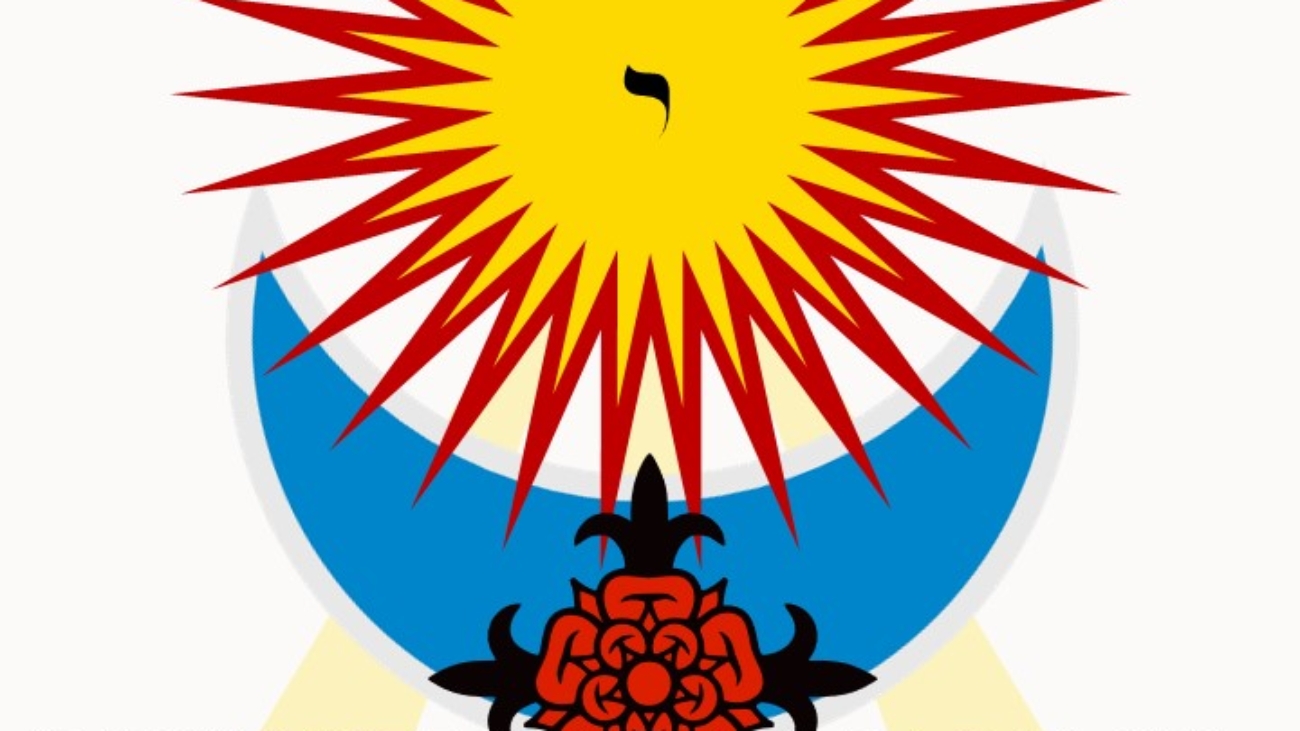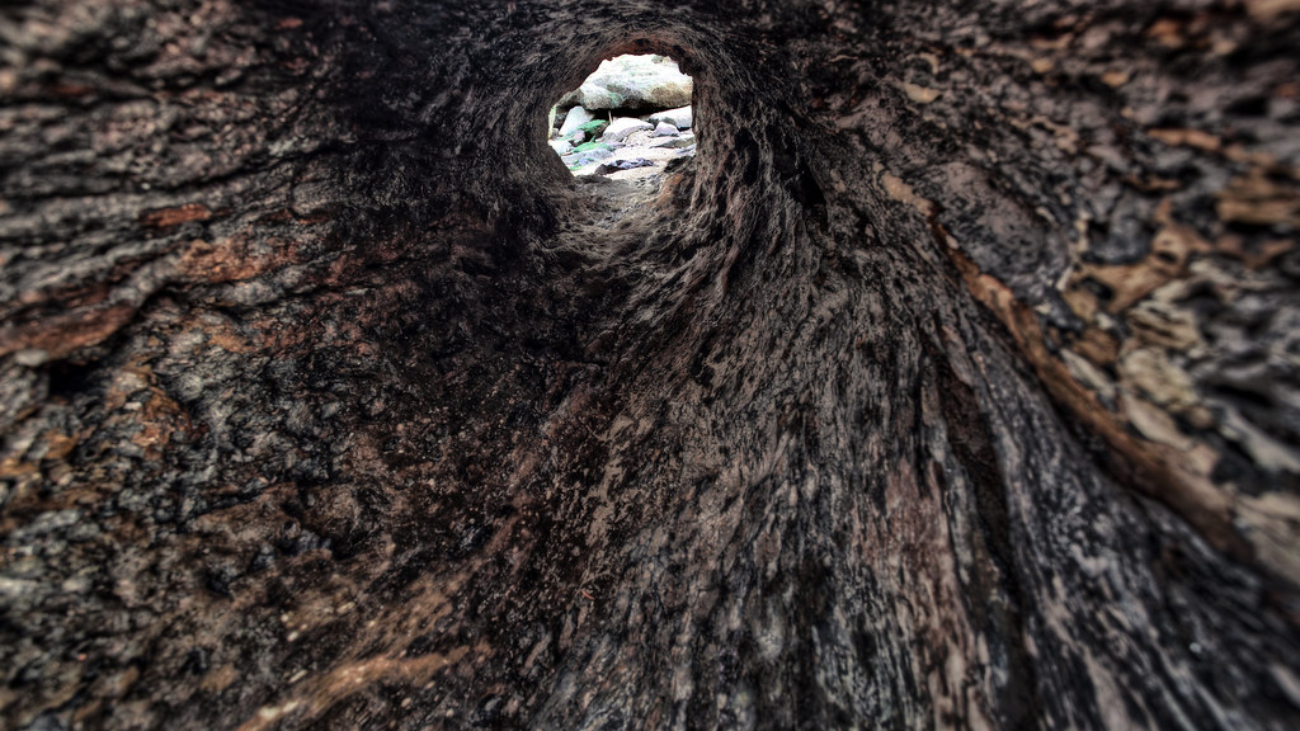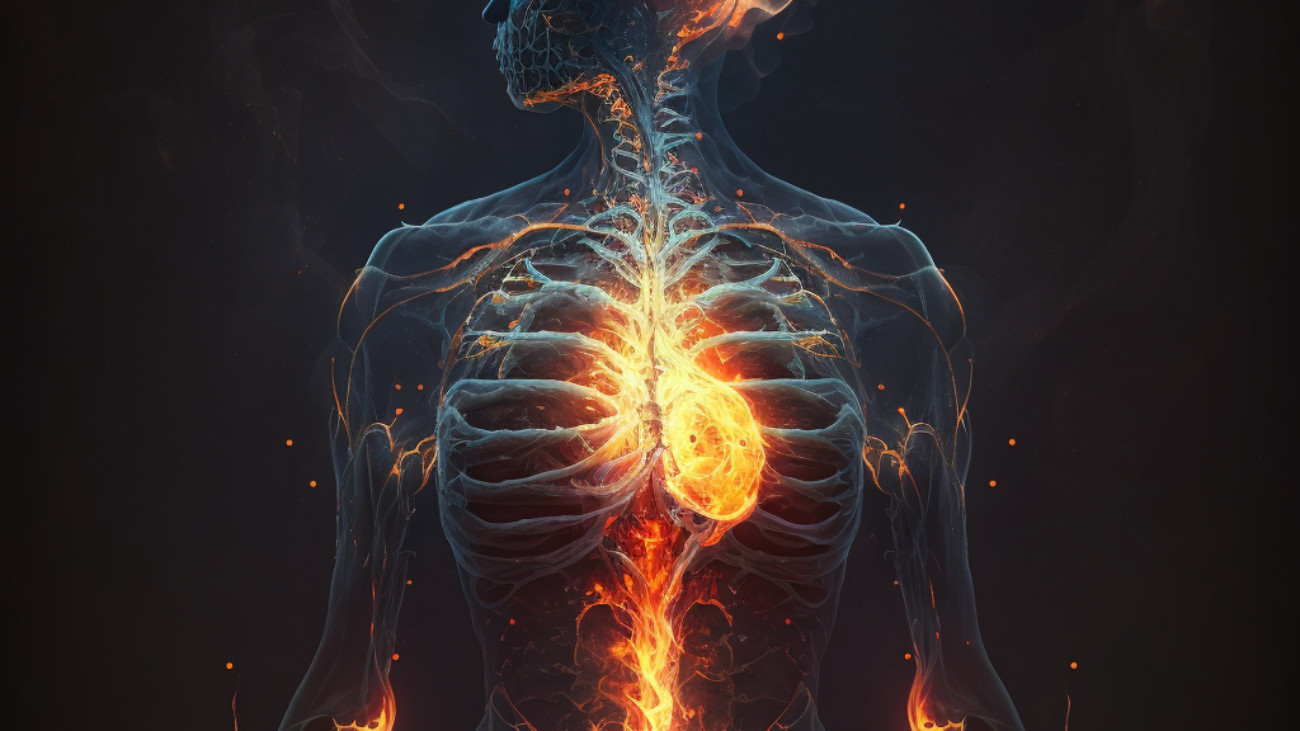The flower of mystery is the deep understanding of one’s identity with God. To eat its fruit is to savor immortality.
Kenosis and Agape in Thelemic Mysticism
Until we have properly cultivated love, the extremes of Thelemic magical and mystical experience remain off-limits.
The Thelemic Background of the Gnostic Mass
The Book of the Law is the key to understanding the theology of the Gnostic Mass and its Creed.
Integrity and Doing One’s Will
In each situation, focus on walking a path of maximum integrity, conscious of your appointed orbit.
Thelema, Polytheism, and Absolute Individuality
Reality is individuals all the way down.
Liber V vel Reguli and the Formula of AHIHVH

I spent some time recently looking closely at Liber V vel Reguli along with the commentary and the early draft notes, and feel like I have come to a few insights which could be of use to others.
As I’ve shown before, one of the main themes of Crowley’s spirituality is the movement from speech to silence and back again. This could also be viewed as the expression of nullity (Ain of Kabbalah) into manifestation (the Tree of Life itself) and the individual’s path of return back to nullity. The first part of this equation expresses Thelemic cosmology, the latter Thelemic soteriology.
In Reguli these movements are dramatized and expressed in the formula LAShTAL. LA means “not,” while AL means “God”. LA and AL represent nullity in concealment and manifestation respectively, while ShT is the process that mediates between them.
In order for ShT to mediate between LA and AL, they have to conjointly share something in common between LA and AL while also adding new information.
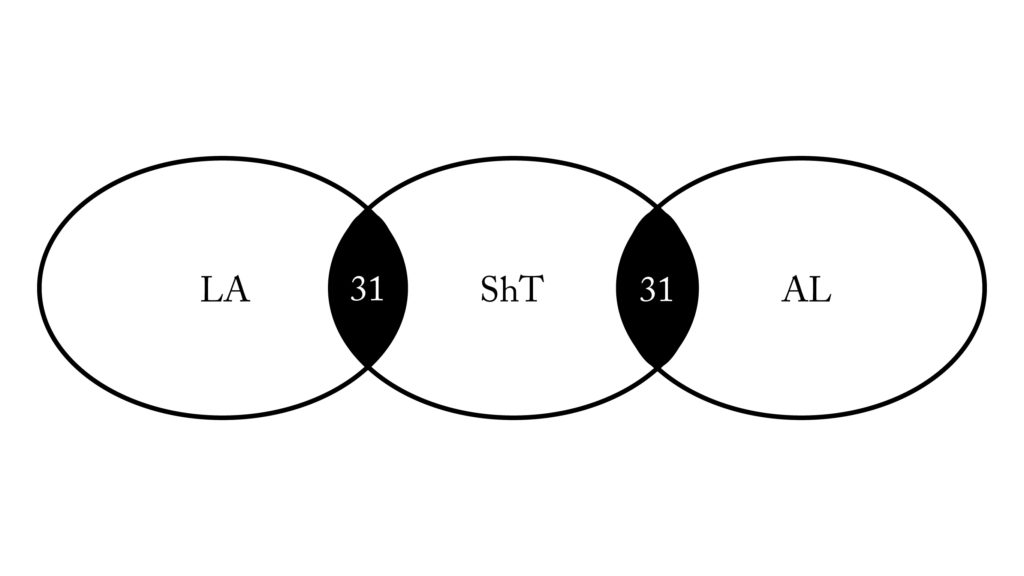
LA and AL both add to 31 by gematria. ShT also adds to 31 by way of the tarot cards these letters are attributed to. Sh or Shin is the Hebrew letter assigned to The Aeon, Atu XX, and T or Teth is assigned to Lust, Atu XI.
As someone recently pointed out to me, there is a tradition in the Golden Dawn, recorded in the Z1 document, of ST denoting an influence from Kether. ST is the Coptic letter ⲋ (“ⲥⲟⲟⲩ” or “soou”). Crowley continues this tradition by assigning this letter to Kether in 777, Column LI.
So by means of its association with 31 and Kether, ShT is identical with the (N)One at the foundation of Thelemic ontology and theology.
But ShT has an additional function. It also indicates the Beast and Babalon conjoined. It is a sexual formula. This sexual formula is indicated by how it is represented in Reguli on the human body and on the Tree of Life.
In the ritual, Aiwass, Therion, and Babalon are attributed to the cross paths of the Tree of Life: Daleth, Teth, and Pe respectively. The cross paths are important as they mediate between the Pillar of Severity and the Pillar of Mercy.
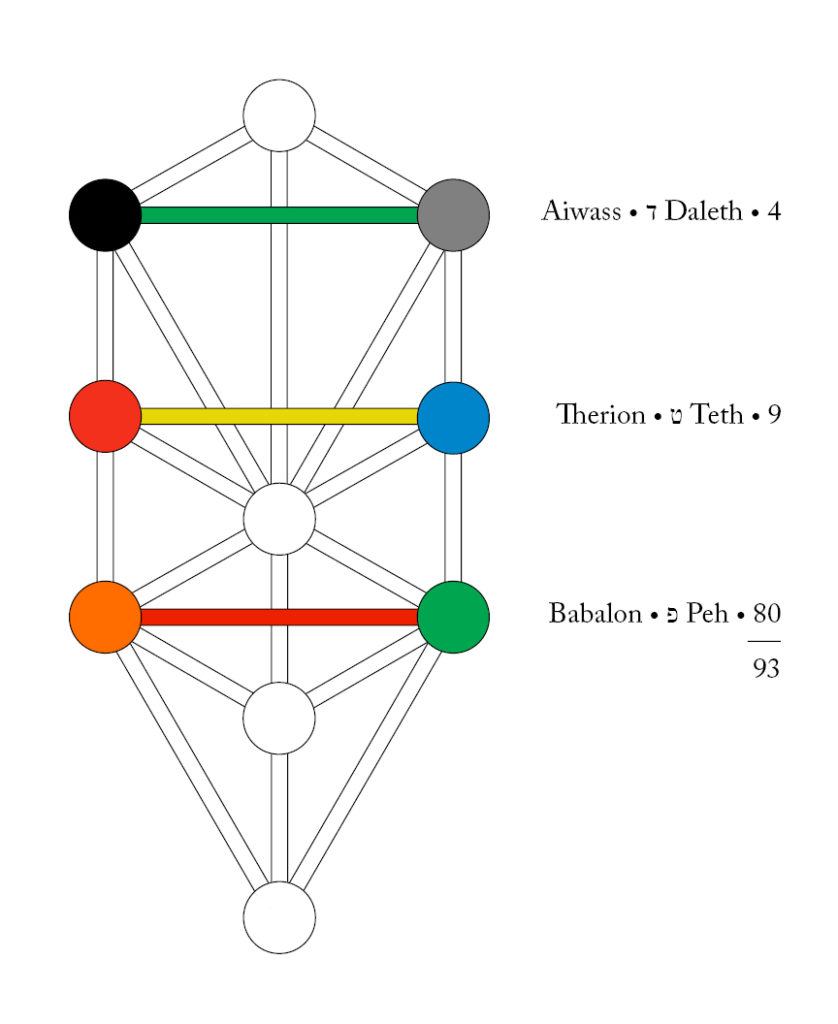
As taught in the Golden Dawn 4°=7□ ritual, the left pillar, the Pillar of Severity, is associated with the letter Shin, which is assigned to elemental fire, while the right pillar, the Pillar of Mercy, is Mem or elemental water. The Middle Pillar is then Aleph, which is elemental air. Fire is archetypally masculine, water feminine, and air androgyne.
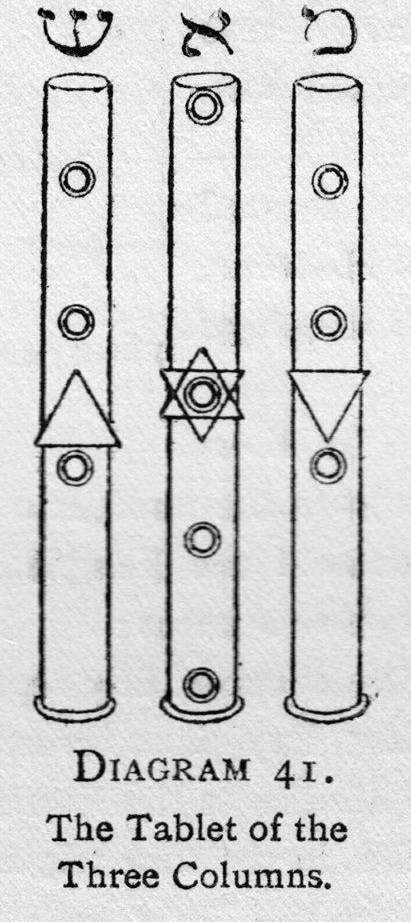
However, these sexual characteristics are not assigned to the pillars in a straightforward way. While the Pillar of Severity is fiery and masculine, the topmost sephira, Binah, is archetypally feminine. She is the supernal Mother. And opposite her, on the Pillar of Mercy, we find Chokmah, which is archetypally masculine, the supernal Father. They are “reflected” in Netzach (masculine-feminine) and Hod (feminine-masculine) respectively, as Kether is reflected in Tiphareth. This reflection occurs both horizontally across the Tree (Binah and Netzach and Chokmah and Hod are opposite each other across the Middle Pillar) and vertically down the Tree (they are opposite Tiphareth). The vertical and horizontal “components” of Liber V vel Reguli work with this double-reflection of sexual energy.
One can view this double-reflection of magical sexual polarity taking place on the Tree as a movement of energy down the Tree of Life from Kether into the subsequent Sephiroth along the paths. One androgyne current emerging from Kether, represented by the path of Aleph, becomes masculine upon reaching Chokmah. There it progresses down the tree along the archetypally masculine paths of Vau, Yod, Ayin, and Resh, into Yesod. In Yesod it is met by a complementary feminine path, originating with Beth’s entry into Binah, and progressing down the Tree along the paths of Cheth, Lamed, Nun, and Tzaddi.
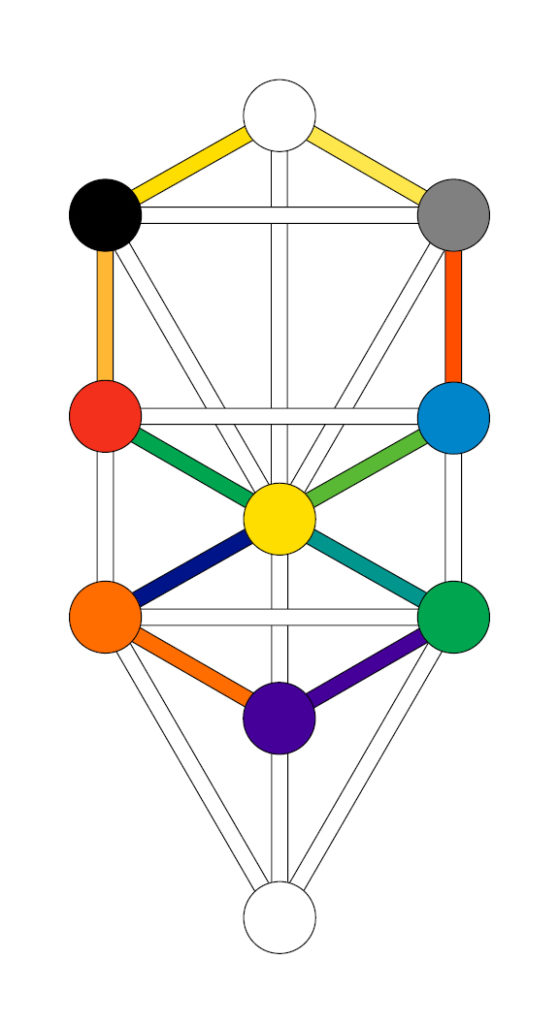
This exchange and “mixing in Yesod” is represented on the Art card, Atu XIV. Art is a hieroglyph of the path of Samekh, which links Yesod with Tiphareth. Here we see the Lion and the Eagle which have exchanged their colors as represented earlier on the Lovers card, Atu VI. If the paths on the Tree represent these essences or potencies, then they were exchanged at Tiphareth, a sphere which, among other things, is the site in which the Rose (Kteis) and Cross (phallus) are conjoined. The caldron is Yesod, which is linked with the sexual organs and the Muladhara cakra. We see spiritual air—presumably the Medicine of Metals—rising out of the caldron, represented by the arrow, as the Caput Mortuum (skull) drops to the bottom.
The cross paths are important to this process, because they are mediating the exchange of energies down the Tree. They are in a sense guiding and determining the separation and mixing of these sexual polarities. That these paths add up to 93 is significant. It tells us that the 93 magical current has something essential to do with the production of sexual polarity from out of androgyny and back again. It has to do with the movement of 0 to 2 (magick) and from 2 to 0 (mysticism), both as a personal spiritual journey and as a cosmological process. Aiwass, Therion, and Babalon are personages representing these governing principles.
For me personally, this is not simply theory. When I’m serving as Priest in the Gnostic Mass, I picture this exchange of energy occurring—moving down and wrapping around and joining mine and the Priestess’s hearts—at the consummation of the eucharist. We are linked energetically at the levels of mind (Daleth and Kether), heart (Teth and Tiphareth), and body (Peh and Yesod). The Tree of Life with the cross-paths can also be used as scaffolding for visualizations during sex magick workings.
If the horizontal component is governed by Aiwass, Therion, and Babalon, the vertical component is governed by Nuit, Ra-Hoor-Khuit, and Hadit. Nuit is associated with the Sahasrara cakra/Kether/the Three Negative Veils; Ra-Hoor-Khuit is linked specifically with the Anahata cakra and the paths of Teth, Yod, and Lamed (which add to 49), but also arguably with the entirety of the Tree in manifestation (hence Microprosopus); and Hadit is linked with the Muladhara cakra and Yesod and/or Malkuth (Crowley refers to this as the “seed” in his commentary).
The conjunction of Nuit and Hadit produces the godhead, Ra-Hoor-Khuit (or Heru-Ra-Ha, so as to include Hoor-paar-kraat). Hadit, as the consciousness or point of view of the individual, is implanted in Malkuth as a seed represented by Heh-final, the Virgin Daughter whose destiny is to be seated upon the Throne of the Mother (Binah). Crowley consistently related the three deities of the Book of the Law to the Tree of Life this way.
So one thing to take note of when attempting to understand LAShTAL is that it shares the same form or structure taken by these three personages in relation to the Tree of Life. You have two simple extremes mediated by a complex third thing sharing characteristics with both of the extremes. Indeed, the entire Tree of Life itself—or Ra-Hoor-Khuit—could be seen as a means of mediating between these oppositions.
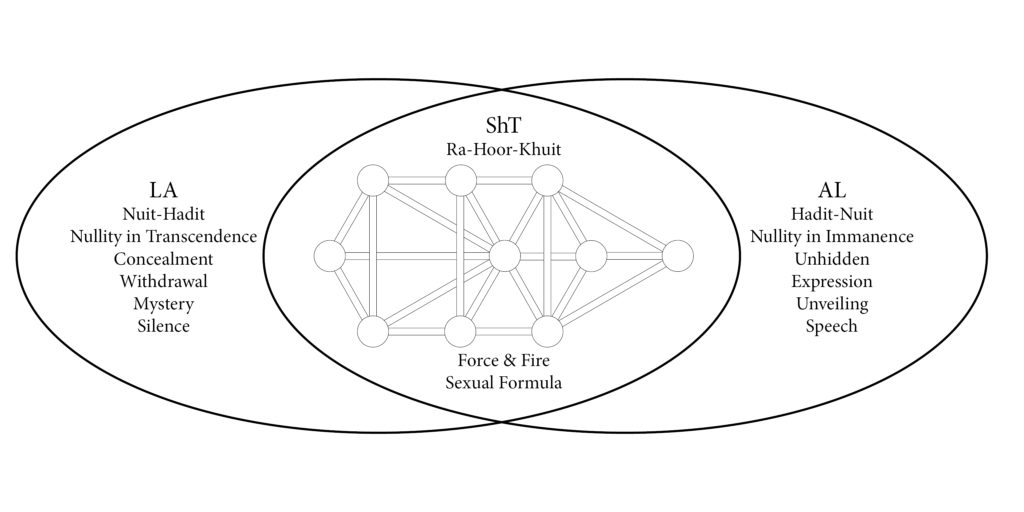
But how does the introduction of the horizontal component modify or inform this cosmological and theological process of the implantation, germination, and return of Hadit to the source?
The cross-paths enter into this as they are involved in the drawing of the Hexagram of Nature on the Tree of Life. Generally speaking, the hexagram is the symbol of the union of the individual with the divine, with the mirroring in the microcosm of the structure of the macrocosm. As such it is symbolic of the individual who has become divine. The cross-paths of Teth and Pe are involved in this hexagram—in fact are the only actual paths involved—as they form bases of the two interlocking triangles.
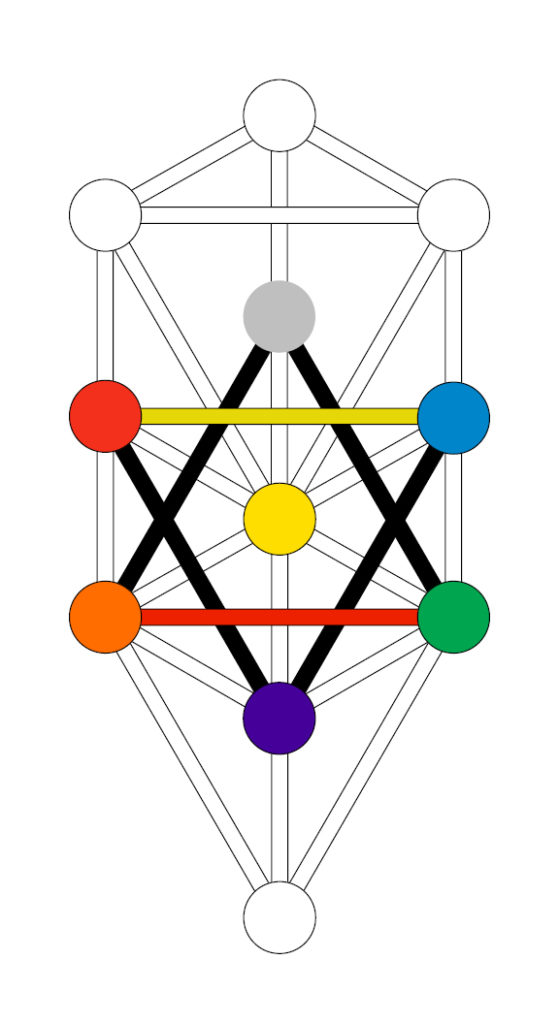
Typically the upward-pointing triangle represents fire and is therefore masculine, while the downward-pointing triangle is water and feminine. But a different connotation is suggested in Reguli where the base of the upward-pointing triangle is assigned to Babalon, and the base of the downward-pointing triangle is Therion. The polarities are reversed.
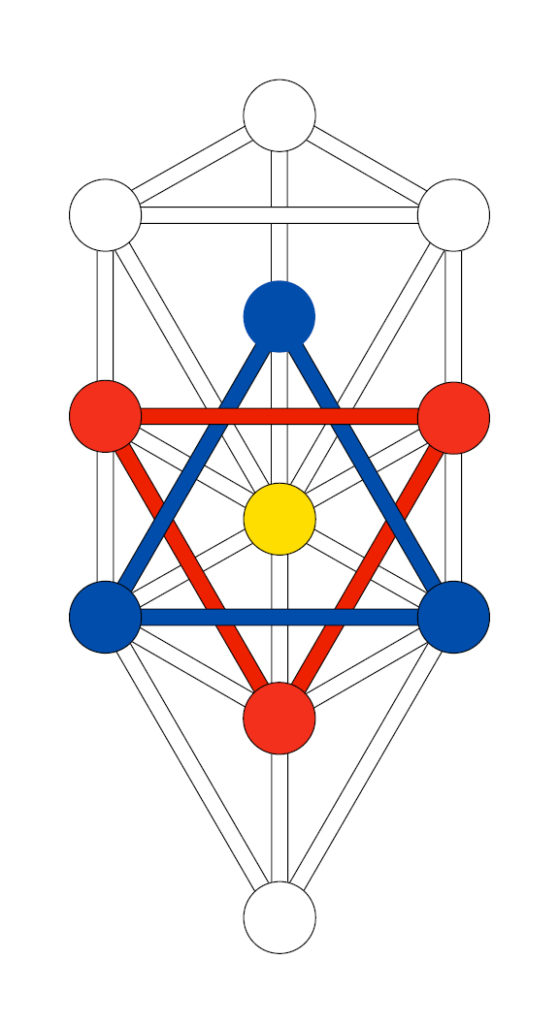
This suggests not so much the familiar Hexagram of Nature but rather the Magical Hexagram as described by Crowley in the Book of Lies, where fire points down and water up.
In the ordinary Hexagram, the Hexagram of nature, the red triangle is upwards, like fire, and the blue triangle downwards, like water. In the magical hexagram this is reversed; the descending red triangle is that of Horus, a sign specially revealed by him personally, at the Equinox of the Gods. (It is the flame desending upon the altar, and licking up the burnt offering.) The blue triangle represents the aspiration, since blue is the colour of devotion, and the triangle, kinetically considered, is the symbol of directed force.
Book of Lies, Chapter 69
Crowley explicitly associates force with the path of Teth in Reguli, as he associates fire with Shin. Hence ShT represents “force and fire”. In the context of the ritual, these triangles would interlock and interpenetrate around Tiphareth, representative of the Anahata cakra, Ra-Hoor-Khuit, and, as we saw earlier, Kteis-Phallus or the Rose-Cross.
As the upward-pointing blue triangle represents Babalon, the Mother, we could attribute the three Mother Letters (Aleph, Mem, and Shin) to its three points, as we might attribute the masculine trinity, IAO, to the three points of the downward-pointing red triangle. Their conjunction gives us the word AShIAVM, which has the same value as MShICh (Messiah) and NChSh (Nechesh, Serpent).
The Messiah or Anointed One affects the union between the individual and the divine. The Serpent in the Garden of Eden is the initiator of mankind into knowledge or gnosis. In Thelemic soteriology, this saving, initiating power is not one individual but rather the conjoining of two individuals, Therion (666) and Babalon (156). And the way in which this union between the divine and the individual is affected is sexual in nature.
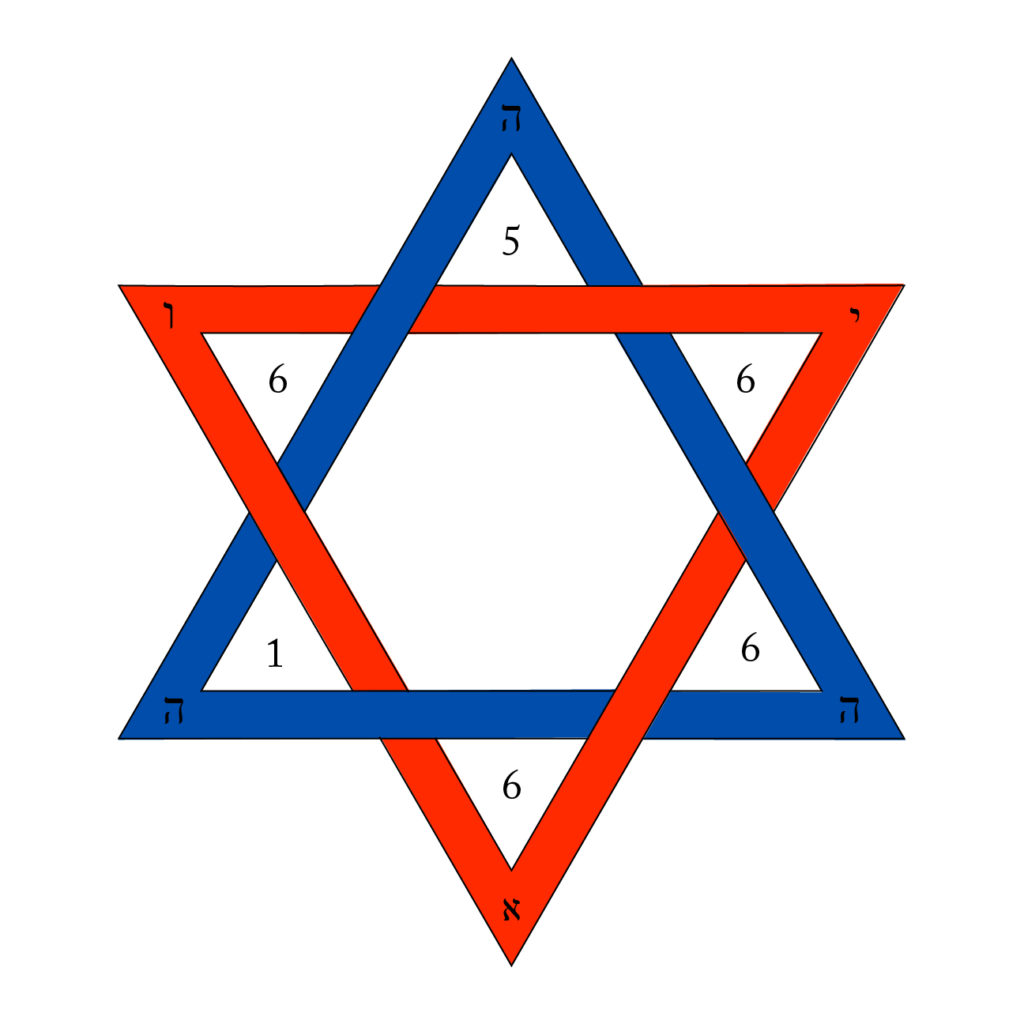
In this formula AShIAVM, the three mother letters are concealed by the letter Heh, giving us AHIHVH, the Great Name which is the conjunction of AHIH and IHVH.
AHIH is the godname of Kether. It represents existence in is most abstract quality or Macroprosopus. In the context of Reguli, it is LA, Nuit and Hadit conjoined.
IHVH represents god in manifestation or Microprosopus. It enumerates to 26 by gematria, which is 13 x 2. 13 is the enumeration of AChD or unity. IHVH therefore expresses unity (AL) by means of duality (ShT or Beast and Babalon conjoined). It is the way in which nullity expresses itself in manifestation or as the Tree of Life or 0=2.
Antonio Lau has come to a similar conclusion in his analysis of how the formula of AHIHVH relates to the Lesser Ritual of the Pentagram:
The conclusion would be that all the points of the Lesser Ritual of the Pentagram (32) on the whole create another Hexagram that symbolizes the Qabalistic Zero, radiating from the center of the Column and flooding the whole Circle with the Limitless Light of Ain Soph Aur. And the Hexagram is the formula of unifying opposites (positive and negative, active and passive, male and female), by the 0=2 Equation.
This sheds light on what it means that Reguli is meant to “invoke the energies of the Aeon of Horus.” The “first gesture” of the ritual—the drawing of the Elevenfold Seal—is depicting the unfolding process leading to the creation of the cosmos. It is also establishing the scaffolding—the cross-paths—that allow for the process of return. The “second gesture”—in which the Son raises the Daughter to the Throne of the Mother—is the familiar process of Tetragrammaton which, by means of sexual interaction between Son and Daughter, the process of return takes place. What Reguli adds to this conception is the idea that Nuit and Hadit (Daughter and Son) must become “sexually mature” as Babalon and Therion on their way of return.
AHIHVH is important for other aspects of Crowley’s spirituality. He relates it to the Lesser Ritual of the Pentagram. By means of the LRP it is indirectly connected with the production of the Medicine of Metals. The connection with the Medicine of Metals is made explicit through Crowley’s discussion of the production of the Eucharist of Six Elements in Magick in Theory and Practice Chapter 20. The production of this medicine is a secret guarded by the Sanctuary of the Gnosis of O.T.O. This formula is also the guiding structure behind Liber HHH, which describes some of the work of the Outer College of A∴A∴. At least one Thelemic author, J. Daniel Gunther, has made an extensive case for the AHIHVH formula being essential to a comprehension of Thelemic initiation in general. (See Initiation in the Aeon of the Child and The Angel and the Abyss.)
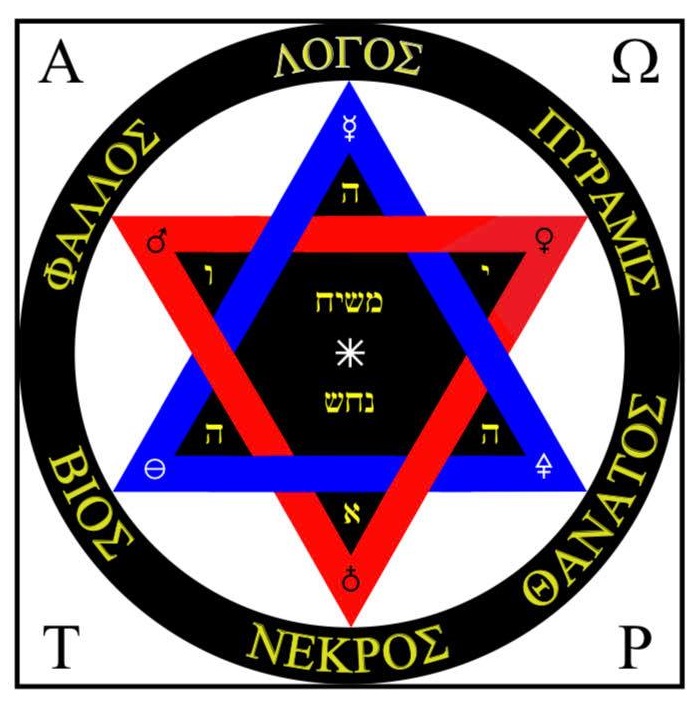
As I said in my recent talk on art and magick, when a magical formula is involved in so many disparate aspects of Crowley’s magick—especially when it illuminates mysteries of both A∴A∴ and O.T.O.—you can bet it is essential to an understanding of Thelemic spirituality generally. I hope to deal with this formula in greater depth in subsequent writings, exploring more fully its importance for Thelemic magick generally.
As for Reguli, my treatment of it here is not exhaustive. I have hardly dealt with the function of the cross-path of Daleth or how Aiwass figures into all of this. (There’s another hexagram that uses the path of Daleth as the base of a triangle.) I didn’t even touch on the elemental attributions of the deities/quarters, and I barely dealt with the significance of the cakras. But hopefully this shows the way in which Reguli is expressive of the underlying ontology and theology of Thelema and how the sex magick implicit in it relates to Crowley’s broader spiritual concern as expressed in the AHIHVH formula.
The Upward and Downward Paths in the Gnostic Mass
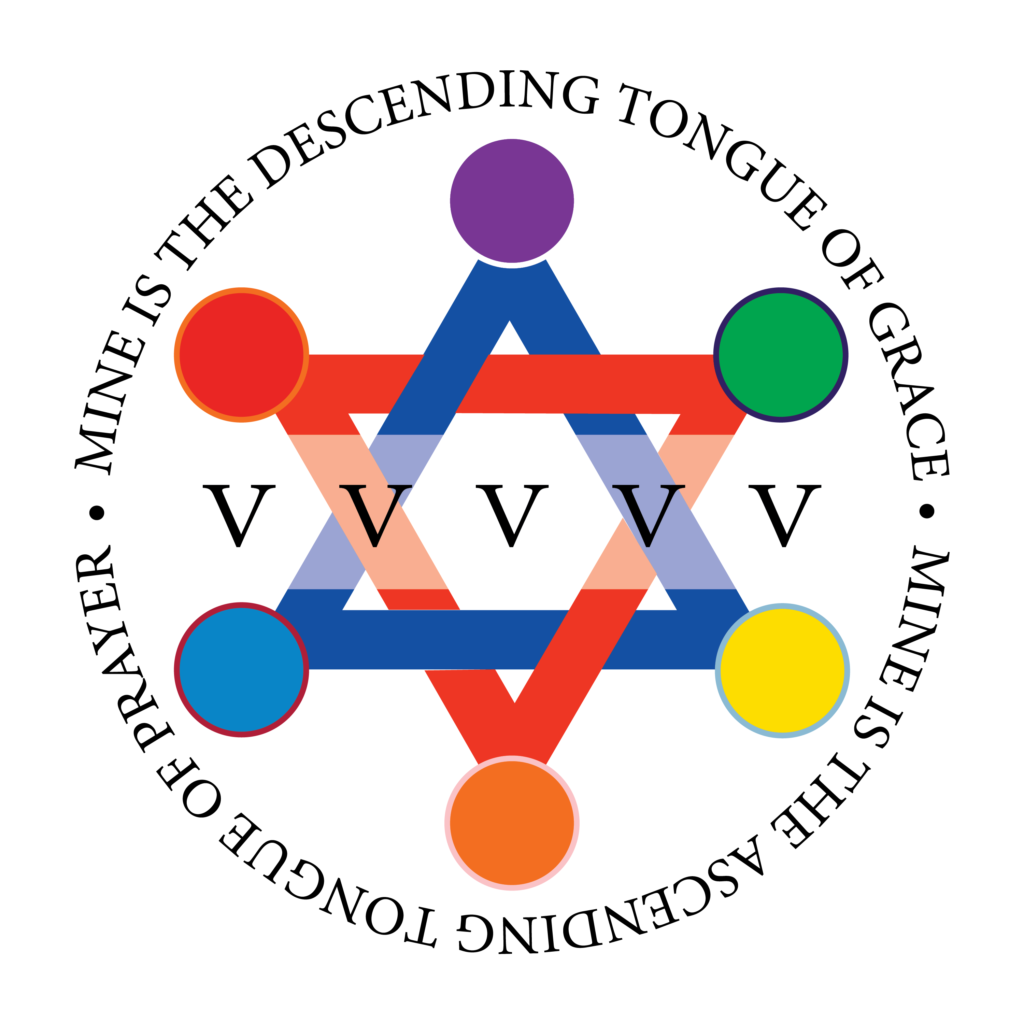
The way up and the way down is one and the same.
— Heraclitus, Fragment 60
One way to understand Thelema is as an account of the interplay between the upward path and the downward path.
The path up is variously described as waking up, the union of the individual with God, Knowledge and Conversation of the Holy Guardian Angel, and Crossing the Abyss. This process is described in The Wake World and in One Star In Sight.
The path down is the path whereby a god incarnates in order to live a life in this world. This process is described in detail in Crowley’s commentaries on the Book of the Law. This process is also the main theme of the Man of Earth degrees of O.T.O.
In its most general sense, the path up is the movement from the Many back to the One and ultimately the None, while the path down is the movement from the None out into the Many.
While it appears briefly at the end of The Wake World with the birth of the new Fairy Prince, and while it is implied by the 0=2 theorem, the path down only seems to have become a major theme of Crowley’s spirituality after his experience of crossing the Abyss. This shift in emphasis coincides with and is reflected not only in The Book of Lies and in The Gnostic Mass, but also in Crowley’s decision to make Thelema the overarching framework of his whole spiritual approach.
You can think of the upward path as a process of dying. There is a movement from speech to silence, from motion to stillness, from the real to the ideal, from time to eternity. As one writer has expressed it, the death that others call “life” is rejected in favor of the life that others call “death”. Thus the ordeal of the second order of A∴A∴ is death.
On the other hand, the path downward is a process of birth, which is the ordeal of the third order of A∴A∴. There is a movement from silence to speech, from stillness to motion; there is the transformation of the real in light of the ideal, and there is a view of time as a moving image of eternity. The Magister Templi teaches. The Magus fecundates the world with a Word. We witness the movement from One back to Many.
The implication seems clear. Awakening is neither an escape from this world nor merely an individual process. The world—this world, right here—is regenerated through the awakening of individuals which Crowley calls “Saints”. Their spiritual community—the Communion of Saints—is the invisible church behind all outward manifestation or appearance which is responsible for the regeneration of appearances.
Both trajectories are represented in the Gnostic Mass. Section IV is the upward path, and Section VIII is the downward path. It is often supposed that the climax of Section VIII (and of the ritual itself), the point at which the Priest and Priestess depress the lance point and the particle into the cup, somehow represents the destruction or annihilation of the Priest or of his ego in Babalon or in the All. But this represents a misunderstanding both of the narrative structure of the ritual itself as well as of what is involved in spiritual awakening from a Thelemic perspective.
First, if there is any “annihilation” of the personality of the Priest represented in the Gnostic Mass, it occurred at the parting of the veil, when the Priest (the microcosm) united himself with the Priestess (the macrocosm). Many details of the ritual support this interpretation. The Priestess speaks in the voice of Nuit or Heaven, and the Priest adores her as such. He isolates the secret flame or essence within himself and offers it up to her, who he addresses as “One,” the “Sun,” “Pan,” and “IAO” among other names. He then kneels before her and adores her while the Collects are read by the Deacon. These Collects number 11 in total, a number signifying the union of the microcosm (5) with the macrocosm (6). All signs point toward the parting of the veil being the culmination of the upward path and the raising up of the individual to the divine.
Now if we were Theravada Buddhists or Gnostic Christians, we would call it a day. The Children would blow out the candles, close the veil, and send everyone on their merry way. But the Thelemic version of awakening does not terminate in the alleged destruction of the personality in the One or in Nibbana. The point of Thelemic awakening is not to achieve something for the individual, not even his or her own destruction, but rather to complete the cosmological process which gave rise to that individual by in turn re-seeding and regenerating the Earth.
Thus we witness a clear trajectory of the Priest. He begins in the darkness of the tomb. The Virgin/Priestess opens this tomb, purifies and consecrates him, and leads him to unfold himself into her light. In this light, he produces a “fruit of labor”. In Section VIII of the ritual, the Priest breaks open this fruit, and from it, he produces his seed. He then vibrates “AUMGN” three times. AUMGN of course is a formula representing the entire cosmological process from silence into manifestation and back into silence again. It is precisely this process which is ritualized throughout the course of the Gnostic Mass, and as such, AUMGN is the word vibrated most often throughout the ritual.
Much has been made of the “seed” of the Priest being his sperm, and people debate to what extent the Gnostic Mass is a sublimated sex magic operation. This is the wrong question to ask. The question is not whether one type of magical act is an instance of another but rather, what is the genus of which both are species? Whether the eucharistic talisman in question is a spermatazoon or a particle of bread, what is it a talisman or vehicle of?
It’s already been made clear that the particle of bread is a vehicle of Harpocrates, the God of Silence. We know from earlier in the Mass that the wine in the cup is the “Vehicle of the joy of Man upon earth”. We might therefore consider the placement of the bread particle in the cup of wine as the seeding of the Earth with something silent, secret, and divine. This seed shall germinate in the black soil and push its shoot through the darkness, out into the light. What will the seed of the God of Silence grow into?
Of course it expands into the Babe in the Egg and ultimately into Baphomet, the Lion-Serpent. You know this if you’ve attended the ritual. And if you’ve read my previous posts, you know I consider Baphomet to be a type of the Holy Guardian Angel. But what is the significance of that outcome? What is its spiritual meaning?
According to Aristotle, the being of anything is given by its outward, perfected form, i.e., by its characteristic appearance when it is fully-grown. The destiny of the seed planted in the Earth in the Gnostic Mass is to become “the Devil,” Ayin, the letter “O”.
[The Devil] is also the vowel O, proper to roar, to boom, and to command, being a forcible breath controlled by the firm circle of the mouth. He is the Open Eye of the exalted Sun, before whom all shadows flee away: also that Secret Eye which makes an image of its God, the Light, and gives it power to utter oracles, enlightening the mind. Thus, he is Man made God, exalted, eager; he has come consciously to his full stature, and so is ready to set out on his journey to redeem the world. —Magick in Theory and Practice, Chapter V
Paradoxically, the path naturally taken by the seed of the god of silence leads it to become a kind of speech. It is the speech which drives away the shadows, which utters in an oracular fashion, which enlightens the minds of those that hear it, and which redeems the world.
Thus having adored the Lion-Serpent:
The PRIEST joins hands upon the breast of the PRIESTESS, and takes back his Lance. He turns to the People, lowers and raises the Lance, and makes ☩ upon them.
Do what thou wilt shall be the whole of the Law.
Which god is the Book of the Law the speech of? Who in particular does Thelema come from? We’re given a name, and it’s not “Aleister Crowley” or even “Aiwass”. There is one particular deity governing this spiritual revelation, and the Gnostic Mass is the ritualistic implanation of his seed in the black soil of the Earth. But to what end?
If this be not aright; if ye confound the space-marks, saying: They are one; or saying, They are many; if the ritual be not ever unto me: then expect the direful judgments of Ra Hoor Khuit! This shall regenerate the world, the little world my sister, my heart & my tongue, unto whom I send this kiss.
—Liber AL vel Legis, I.52-53
I fly and I alight as an hawk: of mother-of-emerald are my mighty-sweeping wings. I swoop down upon the black earth; and it gladdens into green at my coming. Children of Earth! rejoice! rejoice exceedingly; for your salvation is at hand.
—Liber Tzaddi, 0-3
Now and again Travellers cross the desert; they come from the Great Sea, and to the Great Sea they go. As they go they spill water; one day they will irrigate the desert, till it flower.
—The Book of Lies, Chapter 42, “Dust Devils”
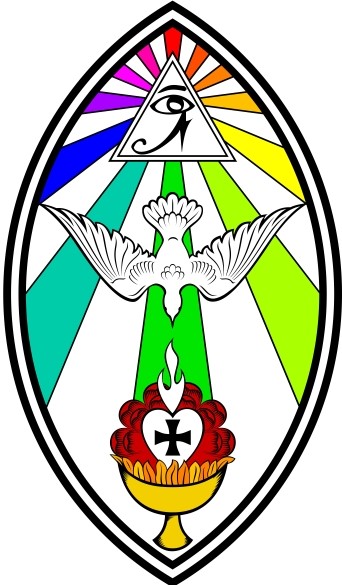
The fruit of the silent seed ritualistically implanted every time we celebrate the Gnostic Mass is a word, and that word is Thelema. The destiny of this word is to regenerate the world to such a radical degree that not only is the Minutum Mundum fertilized, but the entire Tree of Life itself transformed, so that even the Abyss itself turns green—but only if we truly listen to that word.
My child, he who listens must perceive the same as he who speaks, share his awareness; he must breathe together with him, share the same spirit; his hearing must be sharper than the voice of him who speaks.
—Corpus Hermeticum, X.17
If we listened even more intensely than we spoke, we would hear not only the word but also the silence concealed within the word. When we don’t attend, when we don’t open ourselves, when we don’t make ourselves vulnerable to the silence in the speech, the word goes in one ear and out the other. We end up considering the Gnostic Mass to be a performance put on by a club. We think of Thelema as just one current among other magical currents, maybe in need of a little “supplementation” here and a little “balancing” over there. We think we know better than Aleister Crowley—and we do!—but do we know better than the gods? Or more to the point: are we so sure we have sufficiently attuned ourselves to the silence each of us carries within ourselves? Probably not. We’re too busy proving how much smarter we are than Crowley to have bothered truly listening. Because if we truly listened—and most people are lucky if they listen even once in their lives for something they don’t already know—then we would realize that the divine at the center and origin of Thelema is not peculiar to Thelema but instead is the source and seed of all true religion. It is the germ of the process which has renewed the cosmos since its beginning. It is the source of wisdom and of meaning which we are desperately starved for in our technologically advanced culture.
And what is Thelema’s role in all of this? To bring these seeds to the Earth in a shower. To deluge the Earth with light, life, love and liberty.
Thelema represents radical fecundity.
When we set out upon any spiritual path, we are usually looking for strategies to fulfill some absence in our lives. We are looking to get something for ourselves. Thelema has a great deal to offer individuals. Indeed, individuals are the focus of Thelema. Unfortunately, so many people come to Thelema (and spirituality generally) looking for confirmation for what they already believe. They want something which will pander to their egos. And so they say “my will is this” and “my angel told me that”.
But if we listened and attuned ourselves to what is true in Thelema—not true in the sense of just being another true fact about the world, but true in the sense of being eternal and transpersonal—then we would open ourselves to something epic in scope and cosmological in significance. From the point of view of cultic practice, the Gnostic Mass is the occasion to do this. It represents the regeneration of the world by means of Thelema in a way people can see, hear, smell, touch, taste, eat, and drink—such that each of us, crossing our arms in an attitude of resurrection, may say with real understanding this time:
There is no part of me that is not of the Gods!
